Preface
The brevity
of treatment
and approximations
Critical
attention
It
treatment
of nelv types of antennas.
‘l’he problems
are developed quite fully.
antenna
types and techniques.
theory and optics, are quite distinct
of the radio frequency spectrum for communications
is the aim of the present volume to make available
T HE need that arose during the ]var for utilizing the microwave region
and radar stimu-
and
lated the development
lying as they do in the domain of both applied electro-
design techniques,
from those of long-wave
magnetic
to the
antennas.
of the basic principles and the
antenna engineer a systematic
The elements
fundamental microwave
theory and physical optics that are needed as a basis
of electromagnetic
is
for design techniques
that are commonly made
paid to the assumptions
to emphasize the domain of applicability
in the theoretical developments
optics has been treated only
of the results.
its basic principles and to sho~v its
to the extent necessary to formulate
to the more exact methods
relation as a short wavelength approximation
should not be taken as an
of field theory.
of geometrical optics to that of electro-
index of the relative importance
the former
true that
magnetic theory and physical optics.
elements
the optical
is generally the starting point
(reflectors and lenses) of an antenna.
the use of ray theory
for microwave systems presents no new problems over those encountered
in optics—on which there are a number of excellent
treatises—except
that perhaps
micro~vave applications.
the law of the optical path appears more prominently
is in fact
in the design of
The subject of geometrical
It
However,
in
all of
This proved, however,
Nfany subjects have regrettably
In the original planning of the book it was the intention of the editors
the major wQrk done in this country and in Great
to be too ambitious
an
been omitted completely,
to integrate
Britoin and Canada.
undertaking.
and others have had to be treated in a purely cursory manner.
unfortunately necessary to omit two chapters on rapid scanning antennas
time
the
prepared by Dr. C. V. Robinson.
material
of military security and yet
exposition of the subject would have unduly
to represent an adequate
delayed the publication of the hook.
Certain sections of Dr. Robinson’s
material have been incorporated into Chaps. 6 and 12.
The
to conform ~vith the requirements
required to revise
It \vas
ix
�
x
PREFACE
I
take pleasure in expressing here my appreciation
James who,
to Prof. Hubei-t
the
M.
as Technical
The scope of the book,
editorial work and the attendant
the order of presentation of the material, and the sectional division within
chapters were arrived at by us jointly in consultation with the authors.
I am personally
Ivork on
my own chapters.
Editor,
responsibilities.
shared with me much of
.James for his editorial
indebted to Professor
the group,
I hope that
The responsibility for the final form of the book,
the errors of omission
is mine. A word of explanation to the authors of the
and commission,
is in order. After the close of the Office of I’ublications
various chapters
I have on occasions made use of my
and the dispersal of
the results
editorial prerogative to revise their presentations.
The policy of assignment of credit also needs
meet ~vith their approval.
of both Professor
James and myself of
explanation.
The interpretation
the policy on credit assignment
formulated by the Editorial Board for
the Technical Series has been to the effect that no piece of work discussed
Radi-
in the text would be associated with an individual or individuals.
they represent
ation Laboratory
than individual acknowledgements.
source material
References
note-
of the Radiation Laboratory
books have been assiduously a~oided, although such material has been
In defense of this policy it may be
dramm upon extensively by all of us.
stated that
the ]vorlc at the Radiation Laboratory was truly a cooperative
effort, and in only a few instances would it have been possible to assign
individual credit unequivocally.
for the chapter rather
to unpublished material
reports are referred to in the sense that
Sheats.
the Radiation
Laboratory
and Mrs. nary
accepted the ~vork as one of
their assistance and contributions.
in behalf of the editorial staff and the authors
The completion of the book was made possible through the efforis of
I wish
a number of people;
Mrs. Barbara Vogel
to acknowledge
served as technical
and Mrs. Ellen Fine of
the production of figures and photographs \vas expedited by
assistants;
It proved impossible to
hlrs. Frances Bourget
the h’aval
finish the ]t-orl
Ch:lp. 11.
(’entnd Radio 13urw~u h~~vc ~rwiously
m:ltcrial
security U3glllotioms.
photographs of mct:d lens antennas.
The S:1( iomd Rcsc:wch (’ouncil of Can:&~ :md the llrit isll
granted us permission to ti~li(.
in accord:mcc ~~ith mlrrrnt
I.abora,twy
supplied the
from ( ‘unudi:m :md I;ritish reports
‘l>hc I?wII Telephone
K:\v\T,
‘!f”lslllxlm)x,
:lprd,
lll)sl’.\1i1lI T. WIMWIIY,
l).
(’.,
1947.
S.4 MUEL khLVlil{.
�
.
Contents
FORE WORD BY L. A. DUBRmGE
PRE1744CE. .
.
.
.
.
.
.
.
.
.
.
.
.
.
.
.
.
.
.
.
.
.
.
.
.
.
.
.
.
.
.
.
.
.
.
.
.
.
.
.
.
.
.
. vii
.
ix
.
CHAP.1. SURVEY OF MICROWAVE ANT~~NNADESIGN PROBLEMS
.
.
.
.
.
}Iicrowave
.
Beams.
The WavelcngthRegion.
.Lntenna Patterns
Types
of
lIicrowave
Radiating
.4 Survey
Impedance
Program of the Present Volume
.
llernents
of kllcrowavc
Specifications.
Transmission
I,ines
.
.
.
.
}.ntenna Types
.
.
.
.
.
.
.
.
.
.
.
.
.
.
.
.
.
.
.
.
.
.
..2
.
..8
1.1.
1.2.
1.3.
1.4.
1.5.
16.
1.7.
1.8.
21.
22.
23.
2.4.
2.5.
2.6.
2.7.
2.8.
2.9.
1
1
6
7
9
13
14
16
17
19
20
21
23
29
36
37
37
40
45
50
51
53
56
CH.4P. 2.
CIRCUIT
RJ31JATIOIW,
Rf3CIPR0CiTY
THW3RF~!>fS.
.
.
.
.
.
.
.
.
.
.
.
.
.
...16
Theorem and the Nfzximum-power
Theorem
Theorcnl
.
.
~etwork.
.
.
.
.
Introduction
The Four-terminal
The Rayleigh Reciprocity
Th6venin’s
The Two-wire
The Homogeneous
The LosslessLin
Transformation
The Four-terminal
missiOn Line....
Transmission
I,ine
Transmission
e.....
Charts.
I,ine
N“etwork l’:quivalent
.
.
.
.
.
..26
of a Sectio]l
of Trans-
TRANSMI~EVG ANn RECEIVING ANTENNAS.
.
2.10.
2.11.
2.12.
2.13.
2.14.
2.15.
2.16.
2.17.
2.18.
as a Terminating
The Antema
The Receiving Antenna System
The Transmitter
Reciprocity
and Receiver
Impedance
as a Coupled System
.
.
.
.
.
.
.
.
.
an Antenna .
between the Transmitting
.
and Itecei\,ing Patterns
.
The .kverage Cross Section for a Matched
Dependence
The Four-terminal
l)evelopment
The Reciprocity
s,
of the Cross Section on Antenna Mismatch
the Transfer
.
.
of the N’etwork Equations
Network Representation.
between
.
.
System
Coetlicient
.
.
.
.
.
.
.
.
.
.
.
.
.
.
Impedance
.
...59
.
.
...48
of
Relation
.
.
X111
.
.
�
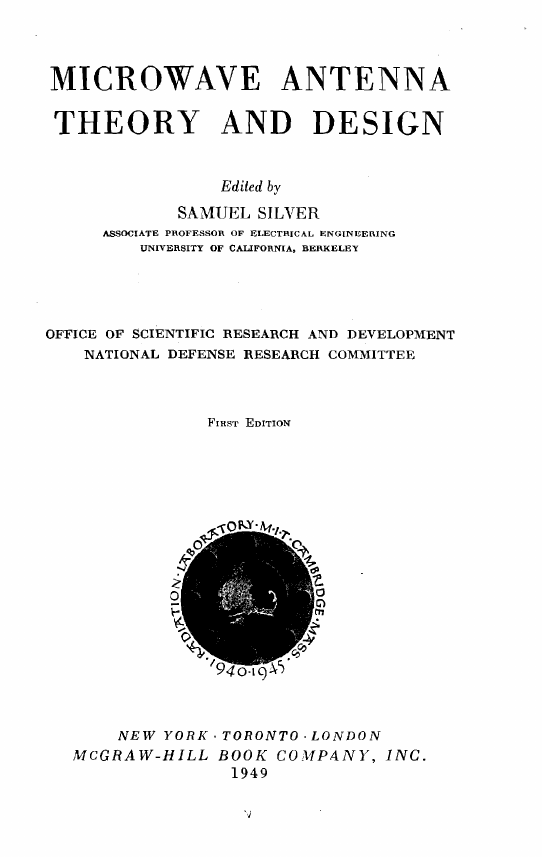


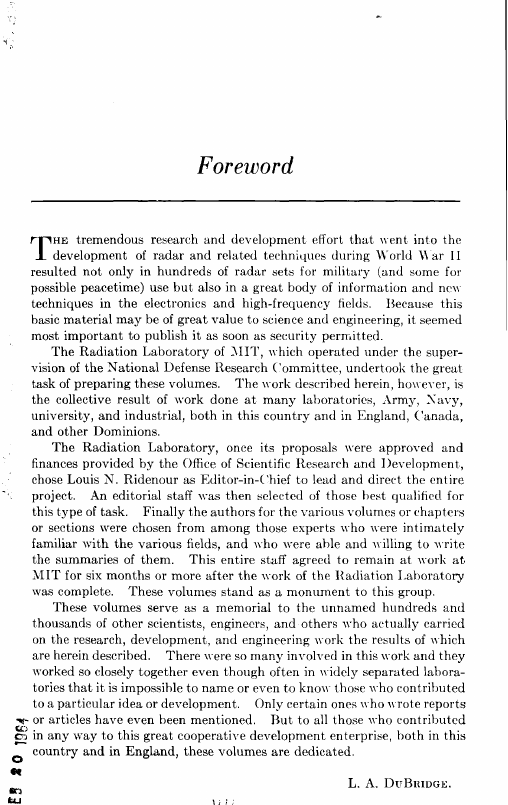
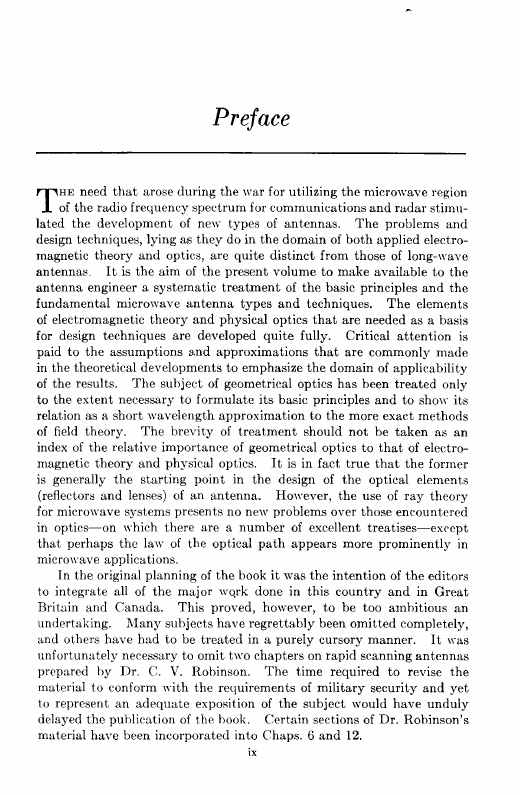
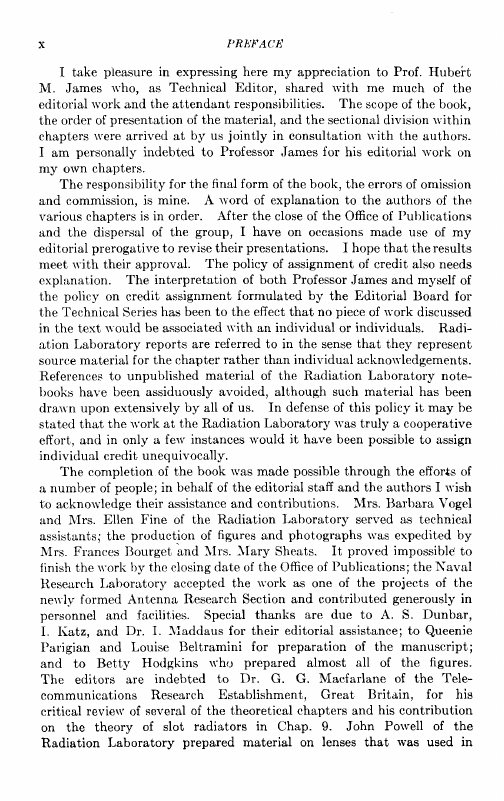
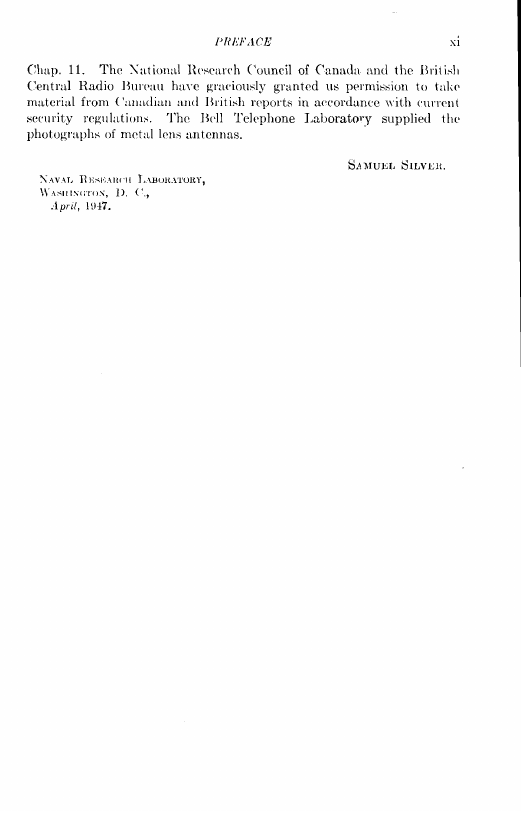









 2023年江西萍乡中考道德与法治真题及答案.doc
2023年江西萍乡中考道德与法治真题及答案.doc 2012年重庆南川中考生物真题及答案.doc
2012年重庆南川中考生物真题及答案.doc 2013年江西师范大学地理学综合及文艺理论基础考研真题.doc
2013年江西师范大学地理学综合及文艺理论基础考研真题.doc 2020年四川甘孜小升初语文真题及答案I卷.doc
2020年四川甘孜小升初语文真题及答案I卷.doc 2020年注册岩土工程师专业基础考试真题及答案.doc
2020年注册岩土工程师专业基础考试真题及答案.doc 2023-2024学年福建省厦门市九年级上学期数学月考试题及答案.doc
2023-2024学年福建省厦门市九年级上学期数学月考试题及答案.doc 2021-2022学年辽宁省沈阳市大东区九年级上学期语文期末试题及答案.doc
2021-2022学年辽宁省沈阳市大东区九年级上学期语文期末试题及答案.doc 2022-2023学年北京东城区初三第一学期物理期末试卷及答案.doc
2022-2023学年北京东城区初三第一学期物理期末试卷及答案.doc 2018上半年江西教师资格初中地理学科知识与教学能力真题及答案.doc
2018上半年江西教师资格初中地理学科知识与教学能力真题及答案.doc 2012年河北国家公务员申论考试真题及答案-省级.doc
2012年河北国家公务员申论考试真题及答案-省级.doc 2020-2021学年江苏省扬州市江都区邵樊片九年级上学期数学第一次质量检测试题及答案.doc
2020-2021学年江苏省扬州市江都区邵樊片九年级上学期数学第一次质量检测试题及答案.doc 2022下半年黑龙江教师资格证中学综合素质真题及答案.doc
2022下半年黑龙江教师资格证中学综合素质真题及答案.doc